If you’re on the go a lot, the espresso Pro 15 4K portable display is an indispensable travel companion for iPad and Mac users.
We last reviewed the espresso 17 Pro in 2024, but it was a bit bulky for some users who need something more compact. There was no smaller version with anything above 1080P support though.
That was until CES 2025 when the company finally announced it had a new 15-inch 4K model on the horizon. After months of waiting, it’s finally here.
If you don’t have a 13-inch iPad Pro or iPad Air to use Sidecar with, I think the 15.6-inch screen is an ideal size for work on the go, without having too much of an impact on the tech bag weight. It’s big enough to fit documents, spreadsheets, or a video timeline while not being so big as to be cumbersome when working in restrictive environments.
espresso Pro 15 review: Design
The espresso Pro 15 is the most Apple-esque portable screen on the market. The only way to make this look more Apple-designed would be to make it in space gray instead of black.
It’s made entirely out of aluminum for a premium feel. That does add some weight to it, but when I compare it to some of the cheaper monitors I’ve reviewed, I’m always worried about traveling with them.
The plastic frames seemed strong, but I felt they could more easily bend and break the display. I think the tradeoff of a bit of weight for improved feel and durability is worth it.
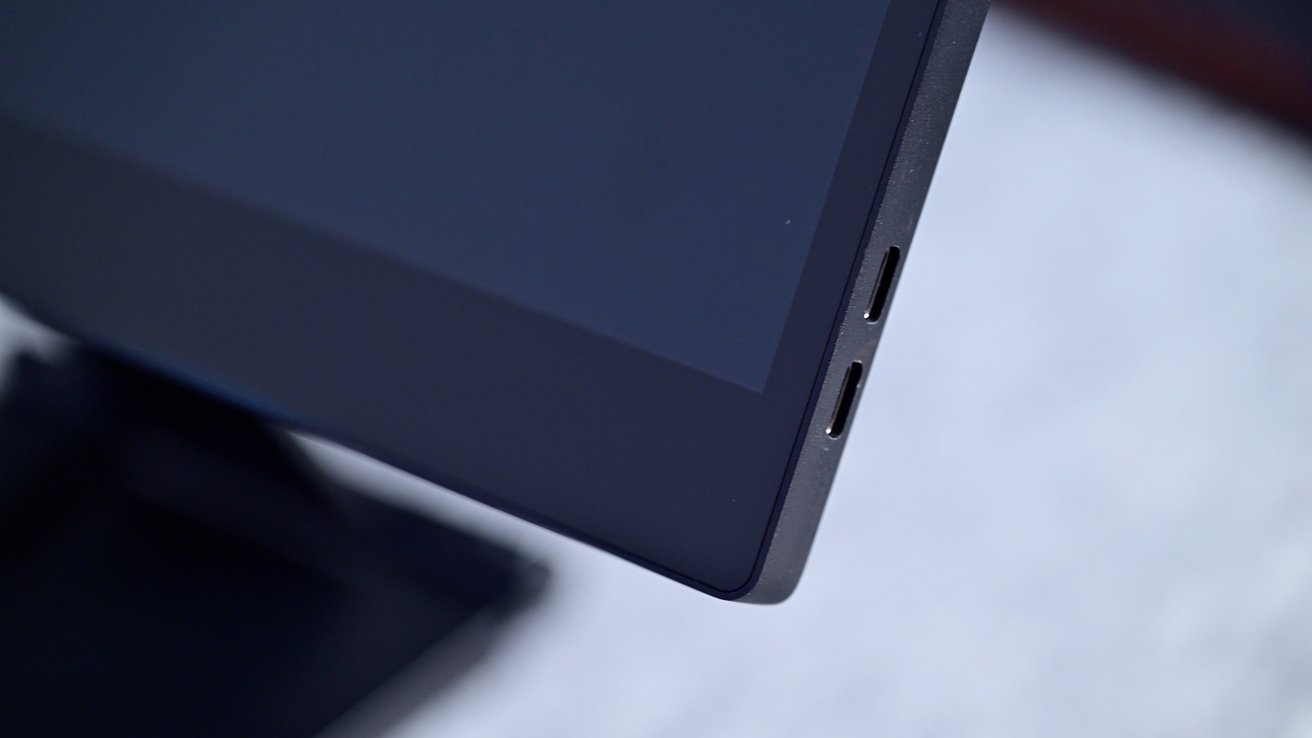
espresso Pro 15 review: There are two USB-C ports on the espresso Pro 15
There are two USB-C ports located on the right side, easy to connect to your host machine as well as to connect an additional accessory. Finally, there are small vents on the bottom right for the speaker.
This display is a bit thicker than the old espresso 15, but I think it looks better. Not only has the screen increased to a higher resolution, but the chin isn’t as pronounced as it was before.
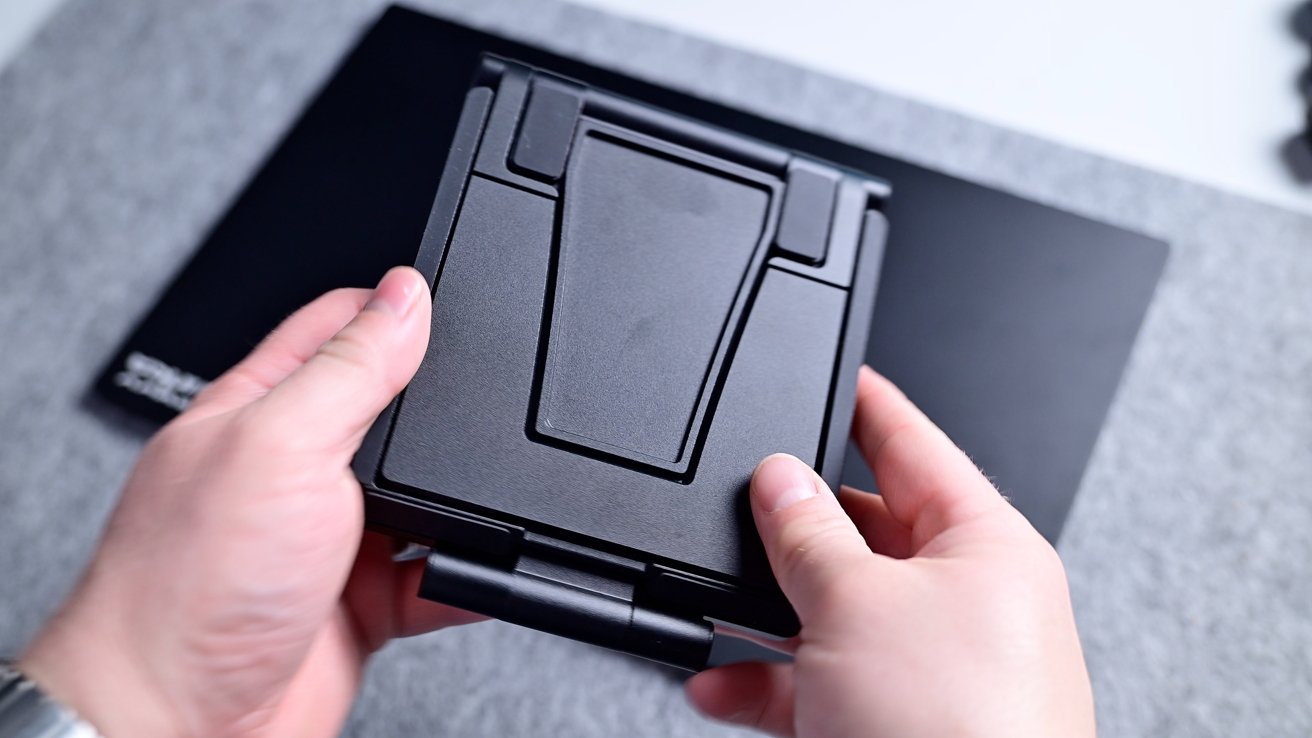
espresso Pro 15 review: Holding the new espresso Stand+
There’s no built-in stand on the espresso 15 Pro. Rather, the company offers a cover with a kickstand built-in or the more capable Stand+.
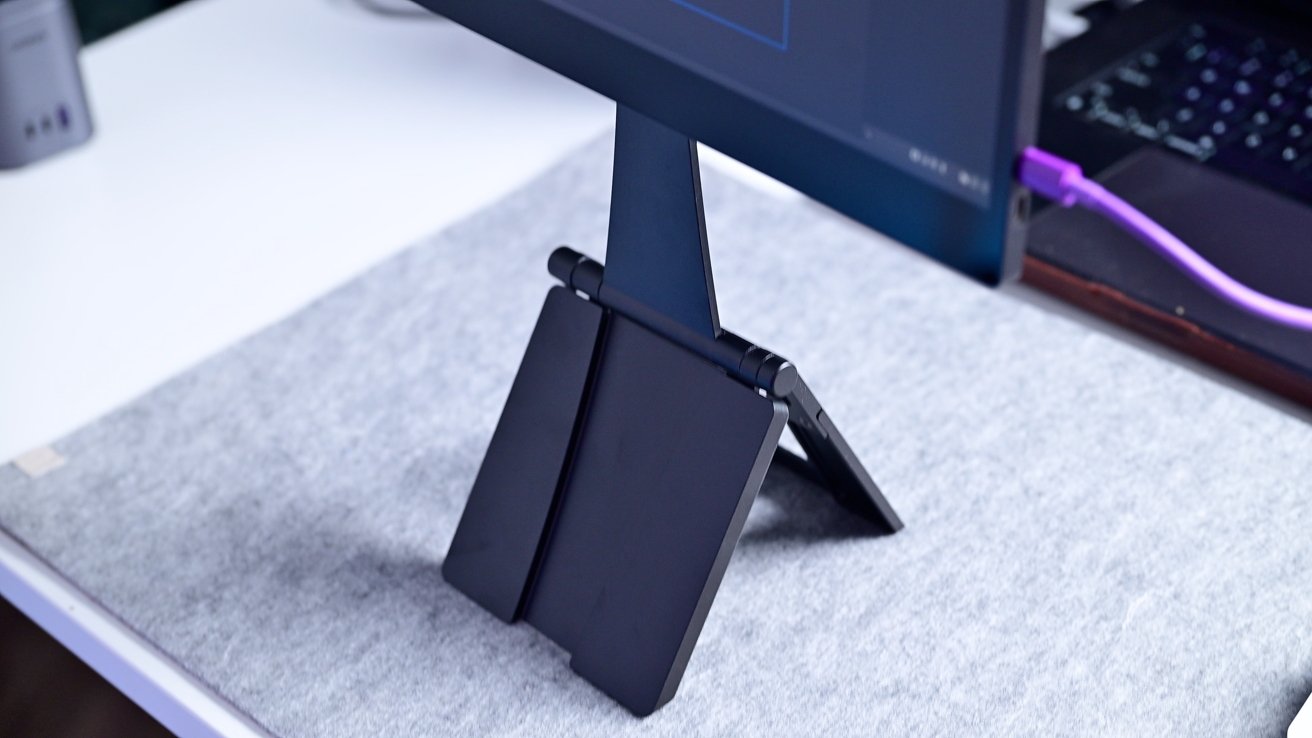
espresso Pro 15 review: The new stand expands out and has plenty of height
The Stand+ is very cool and it magnetically connects to the back of the espresso 15 Pro. You have control exactly over its placement with a few inches of wiggle room up and down as well as left to right.
Plus, this allows you to rotate the monitor, supporting portrait and landscape modes. I think it’s a good step up from the original espresso stand.

espresso Pro 15 review: The old (left) versus new (right) espresso stands
Compared to the last stand, the new Stand+ can extend far higher. I was able to place the espresso 15 Pro above my 16-inch MacBook Pro display.
Not only is that a great use case, but means I can work in very tight places. Like a coffee shop or at an airport where space is a luxury.
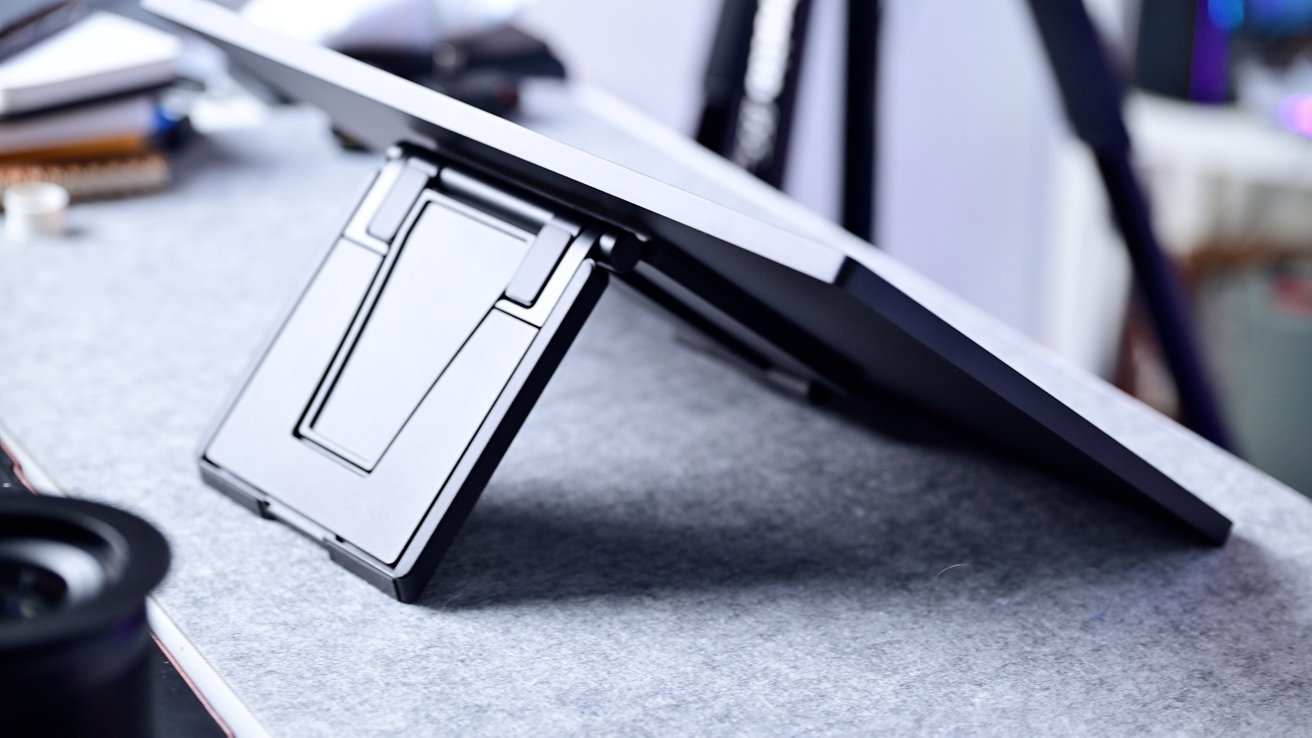
espresso Pro 15 review: You can also use the display in an easel mode
For artists, the stand can be propped up low, allowing the espresso Pro 15 to act as a sort of easel. It’s helpful when using it with a stylus and sketching.
Again, being all metal, that does add to the weight though. Just something to keep in mind.
espresso Pro 15 review: Setup and controls
The setup for the espresso 15 Pro can be summarized with three words: plug it in. There’s no power cable, no power button, nothing.

espresso Pro 15 review: Editing with Final Cut Pro on the espresso Pro 15
The display does draw 9 to 13W of power, depending on the brightness level, so external power may be required if your device does not provide enough juice.
In my testing, no external power supply was needed on my M4 iPad Pro or 16-inch MacBook Pro. Perhaps some Chromebooks or other “ultrabooks” may need that extra power.
Once I plugged it in, the display sprung to life. It quickly extended my MacBook Pro display without issue.

espresso Pro 15 review: Swipe up from the bottom with two fingers to make adjustments
There are some controls, but they’re hidden. You access them by swiping up from the bottom of the display with two fingers.
Three touchscreen controls appear for brightness, contrast, and volume. Tap and slide your finger up and down to adjust any of them.
I’d have liked to see a few more controls here, perhaps a gamma adjustment, but it’s at least something. The 550 nits of brightness is bright and I was struggling indoors at first until I learned how to dim it.
espresso Pro 15 review: Use and display quality
As I mentioned, this is a 4K display with a 3840 by 2160 resolution. It claims to support over 1.07 billion colors and covers 100% of the Adobe RGB color range.
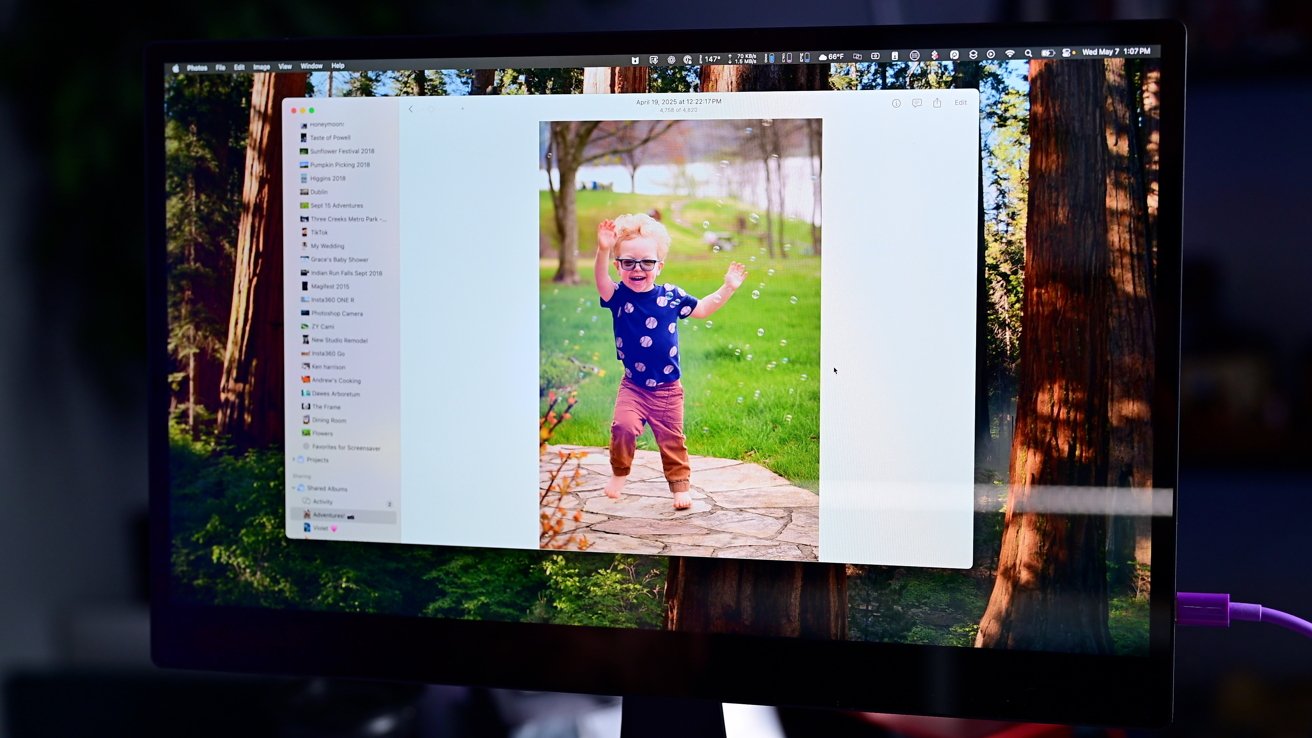
espresso Pro 15 review: We wouldn’t recommend professional photo editing on the espresso Pro 15
It has a 1,500:1 contrast ratio, 550 nits of brightness, and a max refresh rate of 60Hz. Response time is rated at 9ms.
All of these are fairly decent specs and would be fair for any traditional monitor. For one this small and portable, it’s impressive.
I’ve been testing this with the M4 iPad Pro as well as with a 16-inch MacBook Pro. That’s a tough comparison for any display against Apple’s industry-leading panels.

espresso Pro 15 review: We like editing video with the monitor, but we do the color grading on our Mac’s display
After months of use, I found the espresso Pro 15 to have good colors and high saturation. It doesn’t look nearly as good as Apple’s built-in displays, of course. If I had to pick a main difference between the two, I’d say that color is the biggest gap between the two, especially the reds.
That’s not uncommon on portable displays, though. As you’d expect, it’s far worse on cheaper panels than Apple uses.
When I’m working on anything that needs to be very color-accurate, such as color grading a video or editing photos, I keep that content on our Mac or iPad Pro display.
This particular model only covers a bit above 80% of the P3 wide color gamut. If you need something better, the 17-inch espresso Pro does have 100% P3 coverage.
The 550 nits of brightness is a very welcome increase over the 17-inch though, which only has 450 nits. For a monitor that I bring with me and use in all sorts of lighting conditions, higher brightness is very beneficial.
The only thing to make that better would be to perhaps offer some sort of anti-glare option for use in direct light.
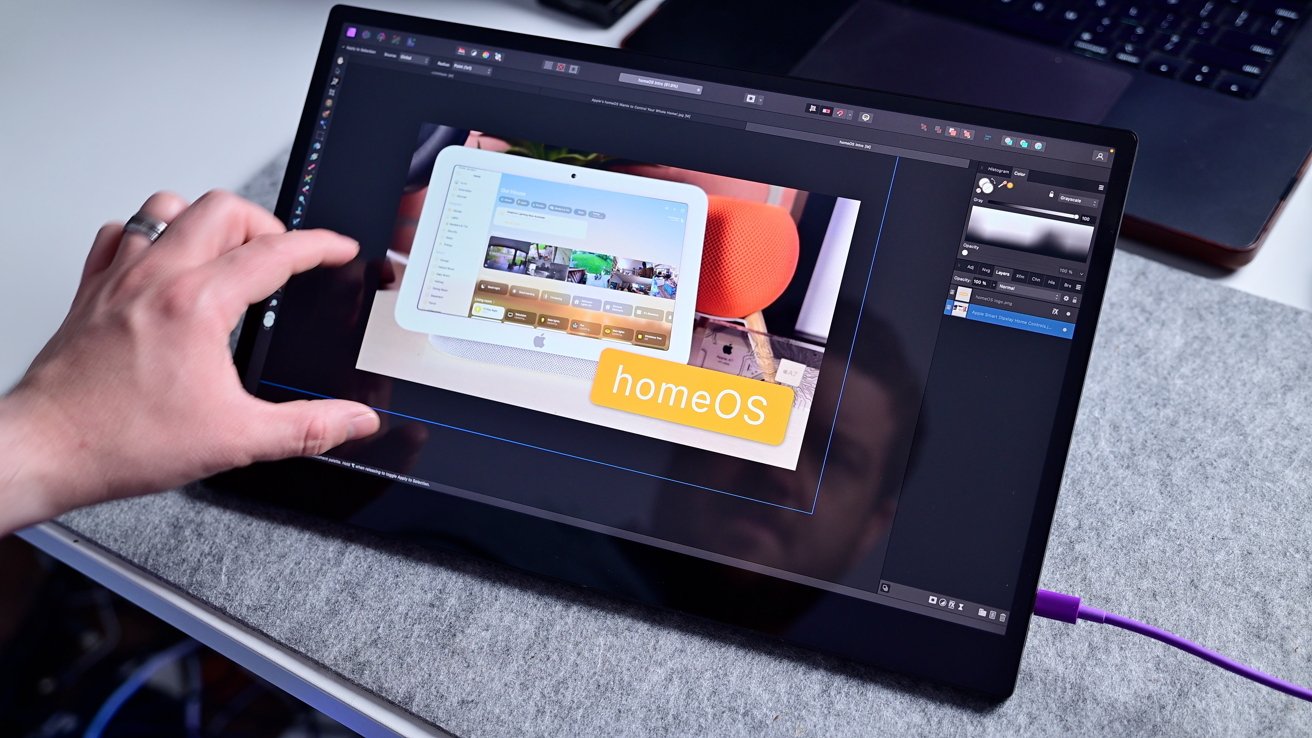
espresso Pro 15 review: You can use the display with your finger, but macOS isn’t great for touching
I was a bit underwhelmed with the touch controls, but that’s probably more on the fault of macOS than espresso. Apple doesn’t technically support touch input on Mac.
When the monitor is connected, it registers as a trackpad. So, on-screen touches are relayed as taps on a virtual trackpad.
It works just fine but macOS is not designed for this. On-screen elements are too small to tap quickly.
Sometimes I’d find myself using the taps to quickly get access to a window, but the real trackpad on my Mac was always just easier.
If Apple did undertake a redesign of macOS to make it friendlier to touch input, then this would offer more to the Mac-centric user. Until then, I’ll probably just ignore it.
espresso Pro 15 review: Should you buy it?
There are other portable displays out there. Even portable 4K ones. You’ll also easily find larger, desktop displays that have better color support too.
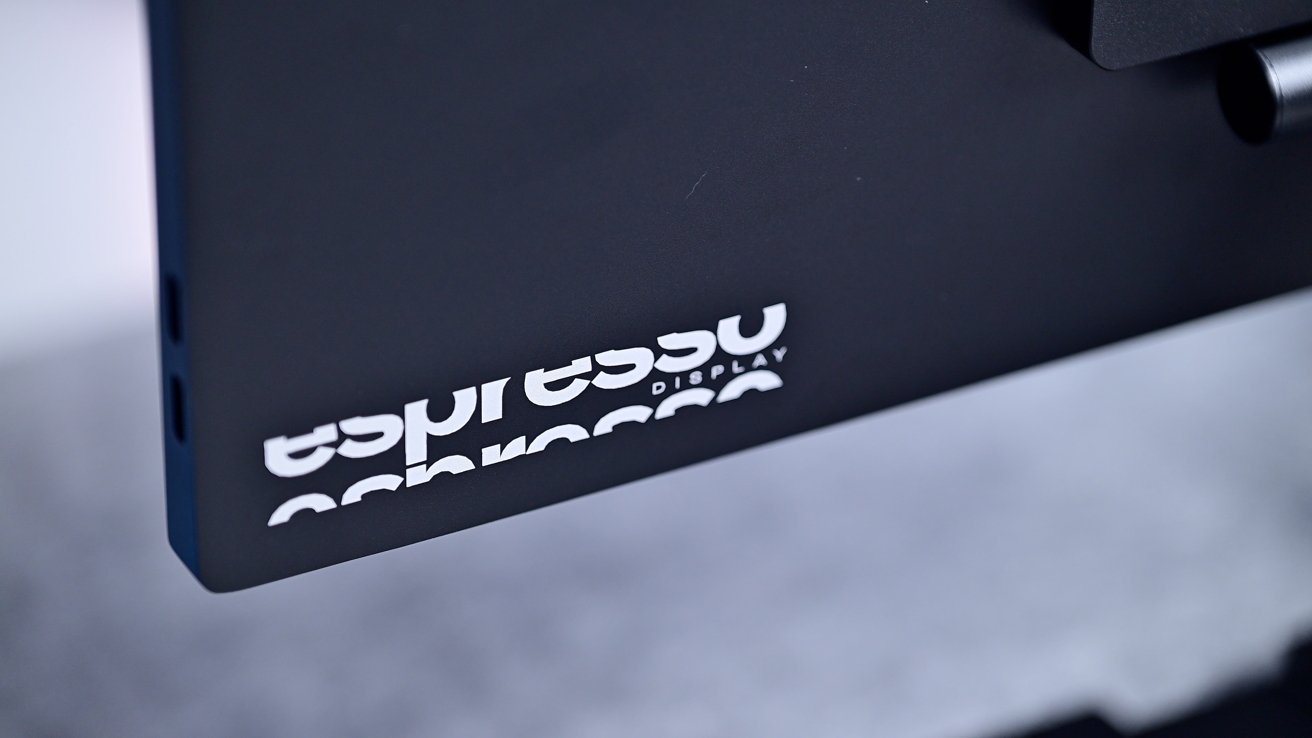
espresso Pro 15 review: There is a logo on the back-left corner
The image quality on the espresso Pro 15 is great. As I’ve already said, it doesn’t add a lot of weight to my travel bag either.
I was also impressed that it improved upon the 17-inch model, offering higher brightness and the new stand.
The only other option I’d reasonably consider would be using a 13-inch iPad Pro or similarly-sized iPad Air as a display instead. With that, you also get a full-featured tablet, alongside a display. Sidecar works really well and is a solid choice.
There are pros and cons to that approach too. In congested networking environments, a cabled connection for that is best. Power may be a concern too, but that may be a wash, because the iPad is obviously battery powered.

espresso Pro 15 review: The espresso Pro 15 is great for a portable monitor
Overall, though, I think the espresso 15 Pro is the best experience here, between ease of use and design. Plus it’s bigger than an iPad solution, and includes the stand.
You’ll have to make the decision that makes the most sense for your workflow though.
espresso Pro 15 review: Pros
- Apple-level metal and glass build quality
- Flat Stand+ can raise the monitor above the biggest MacBook Pro
- Easy to use with no external power supply needed
- Touchscreen and stylus support for those that want it
- Good 550 nits of brightness
espresso Pro 15 review: Cons
- Speakers are middling at best
- Not full P3 coverage
- Not a lot of control over picture quality
- Weight with stand notably heavy
- If you already have a large iPad, this may not be worth the expense
espresso Pro 15 rating: 4 out of 5
Where to buy the espresso Pro 15
You can pick up the espresso Pro 15 direct from the company’s website for $699 which includes a 3-foot USB-C cable, a microfiber cleaning cloth, the Stand+, and the display itself.


